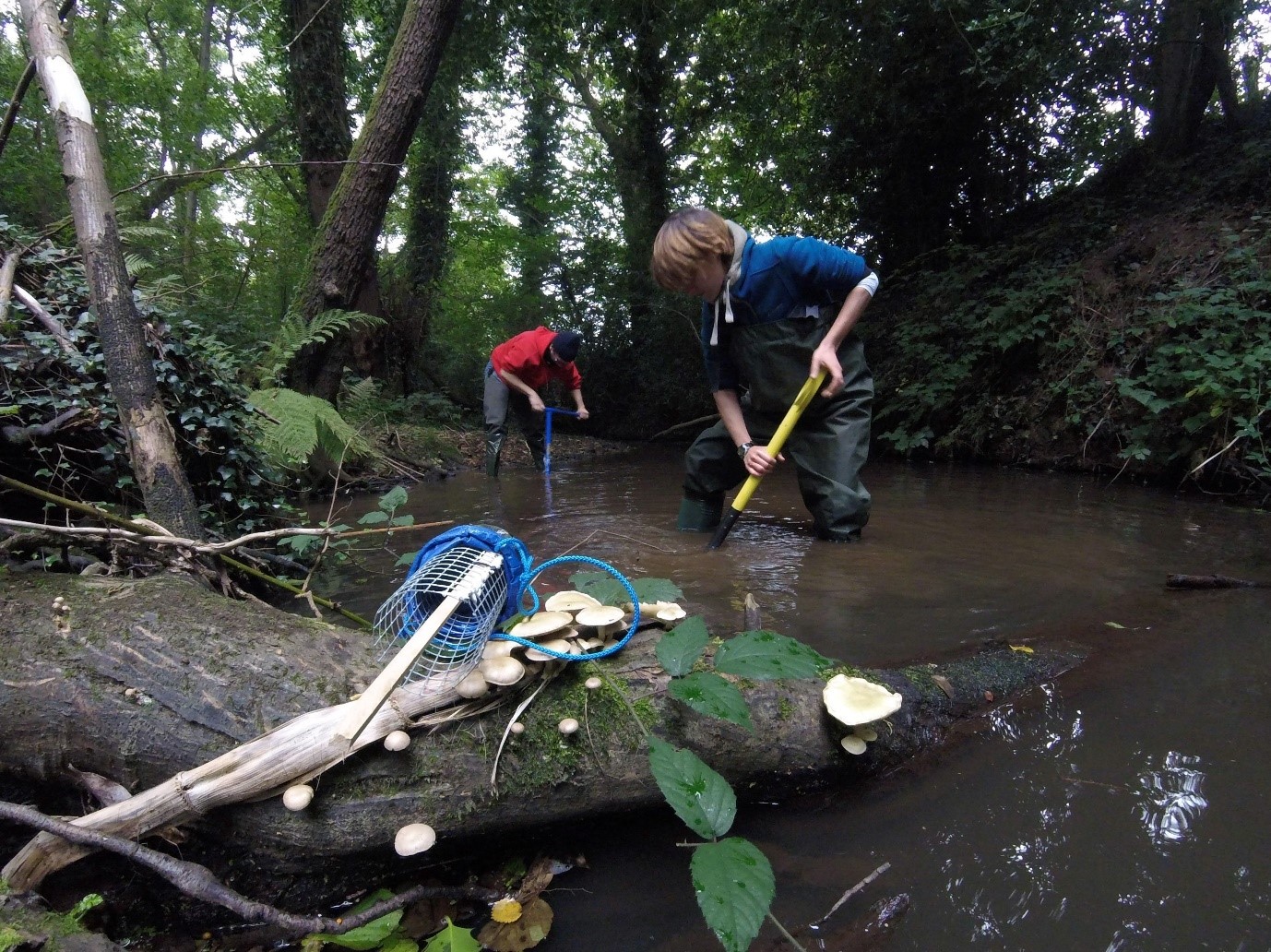Wood in rivers affects invertebrate community traits
11/07/2019

The bed of a river is an important habitat for invertebrates with a diverse range of organisms living within and on the sediment. These invertebrate communities may appear similar at different locations within a river reach, but subtle variations in environmental conditions result in invertebrate species assemblages presenting different characteristics.
For a long time, dead wood has been considered a nuisance in rivers and removed for flood risk, transport, recreation and aesthetic reasons. With changing management practices and new scientific knowledge, wood is beginning to be recognized for its important role driving river processes, both above and below riverbeds, which affect river biodiversity. Yet, how the processes driven by wood affect invertebrate characteristics remains unknown. Functional traits are species characteristics (e.g. body size and form) that reflect adaptation to the surrounding environment, which can provide information on the environmental conditions and pressures to which the species are subjected. To better understand how invertebrates in the bed of rivers respond to wood-induced processes, we explored multiple traits of invertebrates and how they differ at sites where wood is present and absent.
We studied naturally occurring woody debris accumulations in a lowland river in southern England. We sampled invertebrate species living near the surface of the riverbed and deeper in the sediment (see figure). At each sampling site, we also collected environmental information, e.g. sediment type, flow velocity, oxygen and nutrient concentrations, to quantify the variation of traits as a function of environmental variables representing important attributes of wood.
We found that very small invertebrates living more deeply within the sediment had different biological (i.e. aquatic stages, reproduction), physiological (i.e. dispersal, feeding habits) and behavioural (i.e. substrate preferences) traits when found near wood, but the traits of bigger invertebrate living near the riverbed surface did not differ. In the presence of wood, the small invertebrates living below the riverbed were characterized by functional traits that were related to the physical and sedimentological processes occurring around wood (e.g. sediment scour and sorting). The results suggest that wood creates a more dynamic environment with greater variations in local abiotic conditions, resulting in species traits that relate to adaptation to temporal disturbance and spatial refugia. Consequently, the wider ecological effect of wood should be considered when planning river restoration and management solutions.
We found that very small invertebrates living more deeply within the sediment had different biological (i.e. aquatic stages, reproduction), physiological (i.e. dispersal, feeding habits) and behavioural (i.e. substrate preferences) traits when found near wood, but the traits of bigger invertebrate living near the riverbed surface did not differ. In the presence of wood, the small invertebrates living below the riverbed were characterized by functional traits that were related to the physical and sedimentological processes occurring around wood (e.g. sediment scour and sorting). The results suggest that wood creates a more dynamic environment with greater variations in local abiotic conditions, resulting in species traits that relate to adaptation to temporal disturbance and spatial refugia. Consequently, the wider ecological effect of wood should be considered when planning river restoration and management solutions.
For further information read the publication: https://besjournals.onlinelibrary.wiley.com/doi/full/10.1111/1365-2435.13381
Categories & Tags:
Leave a comment on this post:
You might also like…
Preparing your work for Turnitin submission
Before submitting your work into Turnitin for similarity checking, if you have used referencing software then you may need to take some important steps first. Mendeley and Zotero integrate with MS Word by embedding field ...
The fast track to supercar engineering: My Cranfield journey
It’s been a dream come true to work on some of the world’s most prestigious supercars – the Aston Martin Valhalla, McLaren 750 & Artura, the GMA T.33. But every successful ...
Automotive Engineering: From student to hypercar innovation at Rimac
We sat down with recent graduate Thomas Perrin, to discuss how his year on the MSc in Automotive Engineering at Cranfield University propelled him from the lecture hall directly into the ...
What this year at Cranfield really meant to me
Every Cranfield journey is unique. In this alumni reflection, Zachea Scicluna shares what her year at Cranfield truly meant, from facing uncertainty to gaining hands-on experience in industry-backed projects. I’ve been reflecting (and delaying) ...
Preparing for assignments and exams?
Sorry! We know it seems a bit mean to mention the exams in January rather than looking forward to the break before it! However, we know many of you will be thinking about your forthcoming ...
Screening for FTSE 100 companies on Bloomberg
So you’re researching an index and need some data on its constituent companies? Bloomberg’s Equity Screening tool makes light work of this, not just for the FTSE, but for indices, exchanges and sectors worldwide. Type EQS ...






